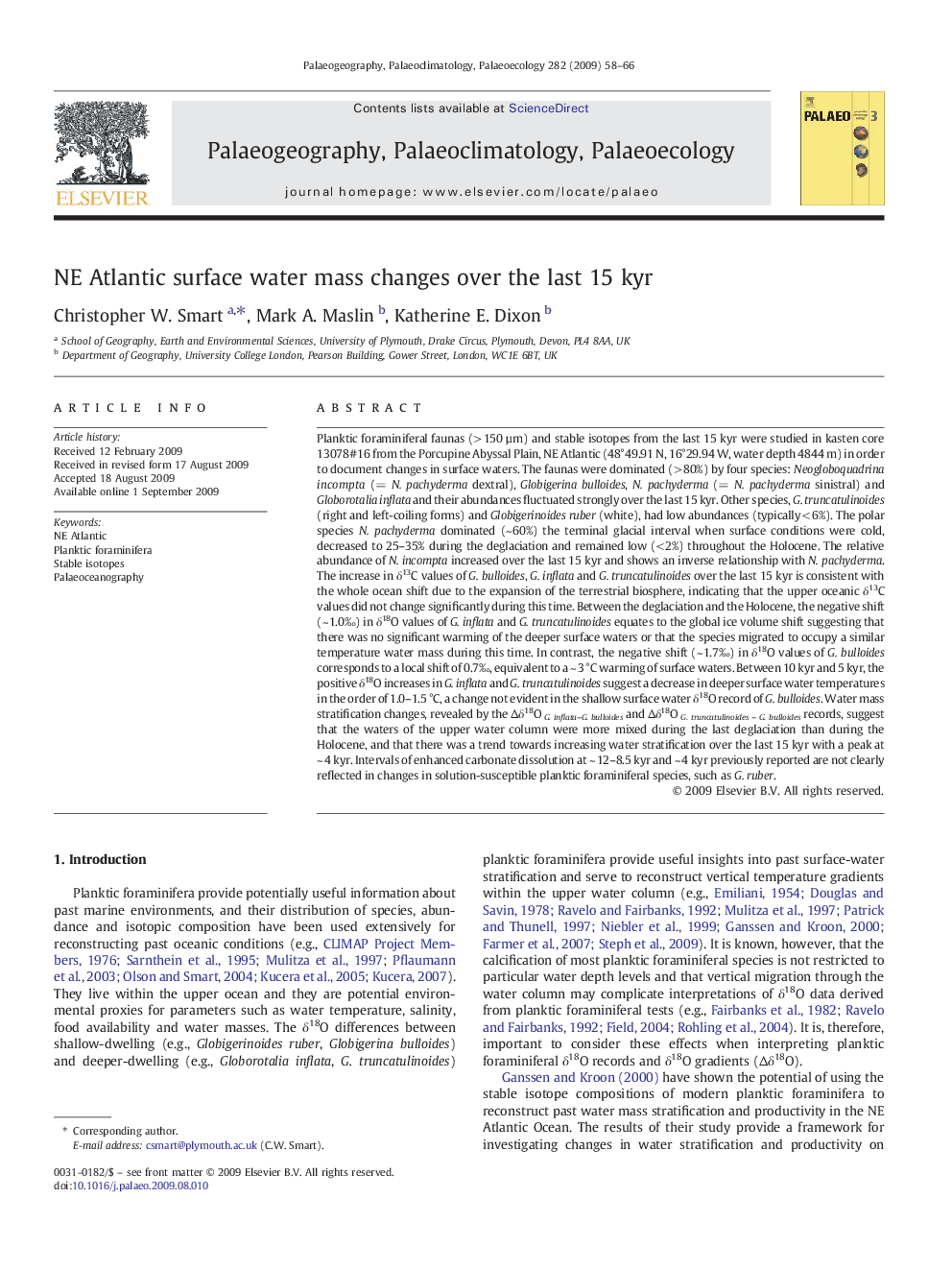| کد مقاله | کد نشریه | سال انتشار | مقاله انگلیسی | نسخه تمام متن |
|---|---|---|---|---|
| 4467921 | 1622293 | 2009 | 9 صفحه PDF | دانلود رایگان |

Planktic foraminiferal faunas (> 150 µm) and stable isotopes from the last 15 kyr were studied in kasten core 13078#16 from the Porcupine Abyssal Plain, NE Atlantic (48°49.91 N, 16°29.94 W, water depth 4844 m) in order to document changes in surface waters. The faunas were dominated (> 80%) by four species: Neogloboquadrina incompta (= N. pachyderma dextral), Globigerina bulloides, N. pachyderma (= N. pachyderma sinistral) and Globorotalia inflata and their abundances fluctuated strongly over the last 15 kyr. Other species, G. truncatulinoides (right and left-coiling forms) and Globigerinoides ruber (white), had low abundances (typically < 6%). The polar species N. pachyderma dominated (~ 60%) the terminal glacial interval when surface conditions were cold, decreased to 25–35% during the deglaciation and remained low (< 2%) throughout the Holocene. The relative abundance of N. incompta increased over the last 15 kyr and shows an inverse relationship with N. pachyderma. The increase in δ13C values of G. bulloides, G. inflata and G. truncatulinoides over the last 15 kyr is consistent with the whole ocean shift due to the expansion of the terrestrial biosphere, indicating that the upper oceanic δ13C values did not change significantly during this time. Between the deglaciation and the Holocene, the negative shift (~ 1.0‰) in δ18O values of G. inflata and G. truncatulinoides equates to the global ice volume shift suggesting that there was no significant warming of the deeper surface waters or that the species migrated to occupy a similar temperature water mass during this time. In contrast, the negative shift (~ 1.7‰) in δ18O values of G. bulloides corresponds to a local shift of 0.7‰, equivalent to a ~ 3 °C warming of surface waters. Between 10 kyr and 5 kyr, the positive δ18O increases in G. inflata and G. truncatulinoides suggest a decrease in deeper surface water temperatures in the order of 1.0–1.5 °C, a change not evident in the shallow surface water δ18O record of G. bulloides. Water mass stratification changes, revealed by the Δδ18O G. inflata–G. bulloides and Δδ18O G. truncatulinoides– G. bulloides records, suggest that the waters of the upper water column were more mixed during the last deglaciation than during the Holocene, and that there was a trend towards increasing water stratification over the last 15 kyr with a peak at ~ 4 kyr. Intervals of enhanced carbonate dissolution at ~ 12–8.5 kyr and ~ 4 kyr previously reported are not clearly reflected in changes in solution-susceptible planktic foraminiferal species, such as G. ruber.
Journal: Palaeogeography, Palaeoclimatology, Palaeoecology - Volume 282, Issues 1–4, 15 November 2009, Pages 58–66